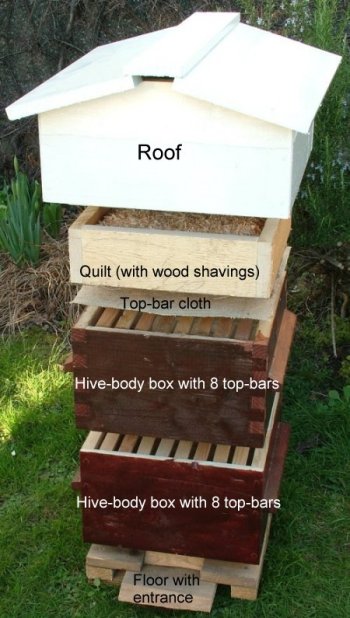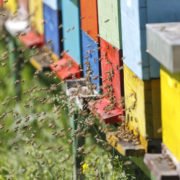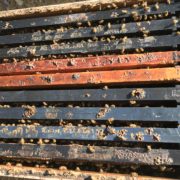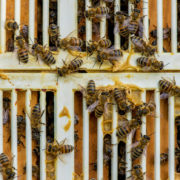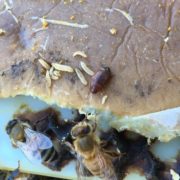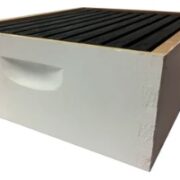The Warré Hive
Most of the beekeepers that we work with – and the majority of beekeepers in the United States – utilize the standard type of beehive known as a Langstroth hive. This type of hive, with removable and standardized rectangular frames, is the most well-known and well-recognized type of beehive. It is typically the main type of hive that is featured and sold in most of the major beekeeping supply companies.
As we have mentioned in many previous posts, however, bees are flexible in their choice of home. They can be found in the inside of tree hollows, owl boxes, the sidings of buildings, and even abandoned furniture. Clearly, there are many types of possible configurations of beehives. There is no universal law that says that bees have to be kept in Langstroth hives – and certainly not one honeybees themselves ever plan on following!
Back around the turn of the 20th Century, a creative and independent thinking French beekeeper named Abbé Émile Warré, gave some thought to the type of hive that he believed would be ideal for both the beekeeper and the bees themselves. This thoughtful beekeeper considered some 350 different types of configurations, eventually settling on what he called “The People’s Hive.” Today, we call this style of beehive a Warré Hive. It was designed by Émile Warré to be easy to construct, economical, natural, and as comfortable as possible for the bees.
The Warré Hive is comparable to many of today’s top bar hives, but it has a number of unique and stylistic features. The roof, like that of a well-designed human house, is gabled to allow for water runoff. A Warré hive almost always features a ventilated loft directly under the roof. And, add to that, it has a typically stylish entrance at the bottom. These hives really look sharp. The most distinctive structural feature of the Warre hive – at least in our opinion – is the quilt box that is placed directly under the roof. Within the quilt box, the beekeeper places straw or shaved cedar chips to absorb excess moisture and provide insulation for the colony below.
Besides being a work of art for the beekeeper, the Warré hive is relatively inexpensive and easy to construct for a practical-minded beekeeper. The materials mostly consist of inexpensive natural wood. Since the hive itself is also a top bar hive, it does not require the purchase of enclosed frames or foundation. The bees are free to build natural comb much in the same way that they would naturally do in the wild. There is no plastic anywhere in or around the hive.
Unlike most conventional hives, Warré hives are designed to be worked from the top down. This means that Warré hives are typically supered from the bottom rather than from the top. When the first box becomes full of bees and brood the beekeeper will then add an additional box underneath, enabling the bees to expand downward. This is a natural movement for the bees. Eventually, when the bees have naturally expanded their brood rearing into the lower boxes, the upper box will end up remaining mostly filled with honey. The beekeeper then harvests this top box – usually only once per year.
Émil Warré envisioned a system whereby the beekeeper would generally leave the bees alone, providing for their maximum comfort. In his judgment, the bees did best with minimal beekeeper intrusion. He ideally envisioned only one visit per year simply to remove the top box. There is something to be said for this hands-off approach. It is very respectful to the bees. On the other hand, however, in today’s adverse environment, where bees are subject to all sorts of maladies and dangers, the bees can – and usually do – benefit from a supportive relationship with a responsible beekeeper. To this point, the Warré design can be somewhat cumbersome for a beekeeper who wants to regularly inspect and manage their hive.
If you are interested in exploring the Warré hive further, we recommend taking a look at The Bee Space website, which features a link to Émil Warré’s famous book, “Beekeeping for All,” as well as detailed instructions on how to build your own Warré Hive.
Photo of Warré Hive used by permission, courtesy of Nick Winters; The Bee Space

